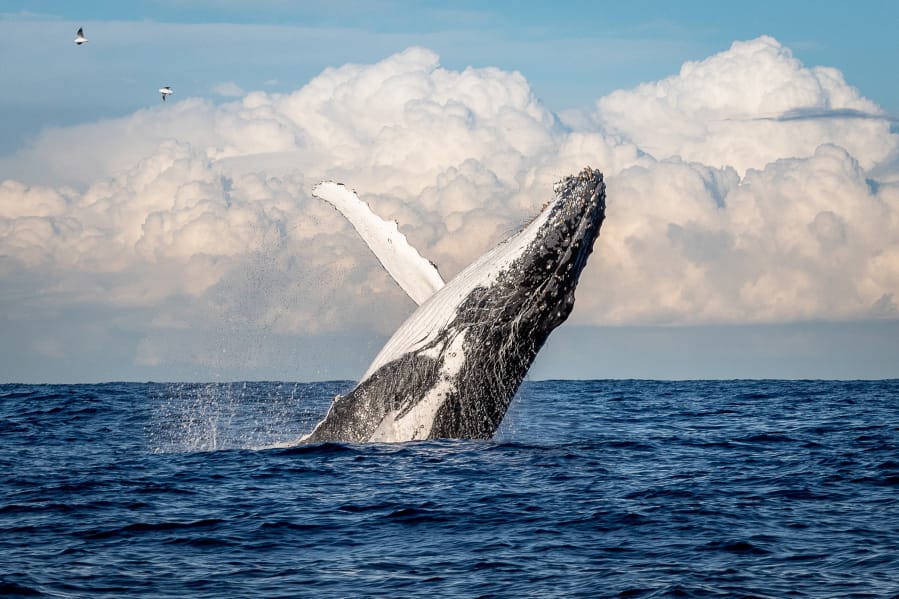LOS ANGELES — Karin Forney still remembers when an unusual number of humpback whales started showing up in Monterey Bay a few winters ago. She could see them out her window — so close to the surf that kayakers could literally paddle up to them.
But with this delightful arrival came an alarming number of humpbacks getting entangled in fishing gear that cut into their flesh and often led to death. This sudden crisis confounded scientists, fishermen and animal rights groups.
“We went from virtually no humpback whale entanglements to one every other week — and then during peak, in the spring of 2016 … we were basically on call every single day,” said Forney, an applied marine ecologist at NOAA Fisheries who scrambled to help the rescue efforts.
“The whales just kept coming.”
In a recently published study, a team of scientists solved the mystery. They showed how one dramatic shift in the marine ecosystem, exacerbated by an ever-warming planet, could topple a domino of problems across California.



